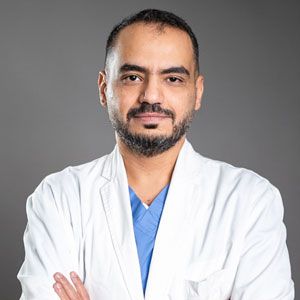
The discipline of neurointervention, particularly endovascular stroke treatments, is expanding significantly in the Gulf Cooperation Council (GCC). With breakthroughs in endovascular procedures resulting in notable improvements in patient outcomes, this relatively new specialty which is less than 35 years old has transformed the care of cerebrovascular diseases. The efficacy of these treatments in lowering disability resulting from large vessel occlusion strokes was established by seminal research published in 2014–2015. Since then, neurointervention has advanced quickly in Saudi Arabia, where more people have access to specialized care nationwide.
Saudi Arabia's famous neurointerventionist, Dr. Faisal Alghamdi, received his medical degree from King Abdulaziz University in Jeddah in 2006. Neurointervention was a relatively unknown profession then, with few practitioners nationwide. Motivated by his love for the subject, Dr. Faisal traveled to France, the birthplace of neurointervention, where several of the world's foremost experts in the field received their advanced training. He finished a four-year interventional neuroradiology fellowship in France and Belgium after passing the French radiology board. Dr. Faisal was exposed to cuttingedge methods early on in his training at prominent French facilities, including endovascular stroke therapies before the methods were generally recognized globally.
In 2016 Dr. Faisal returned to Saudi Arabia with a wealth of medical and administrative knowledge. Combining his clinical expertise with a solid grasp of logistics and healthcare administration, he built the first neurointervention service in Mecca at King Abdullah Medical City from scratch. The service has expanded under his direction to become one of Saudi Arabia's most renowned neurointervention facilities, handling challenging cases from all over the kingdom.
Neurointervention has improved considerably in the area due to Dr. Faisal's commitment to both patient care and system improvement.
Innovation for Enhanced Patient Care
Innovative treatment methods and ongoing technology developments characterize the quickly developing area of interventional neuroradiology. Due to the combined efforts of doctors and bioengineers, recent advancements have greatly enhanced patient care. An important development in medical science is the management of cerebral aneurysms. While novel devices such as the intrasaccular device and improved flow diverter stents have changed the treatment of more difficult aneurysms, the advancement of aneurysm coils has led to designs that accept a variety of aneurysm geometries. Flow diverter stents using shield technology have a lower thrombogenicity, which means less prolonged antiplatelet medication is required.
I believe that every milestone is just a step forward, with always more to strive for and contribute
“Technological developments in the fields of angio machines, microcatheters, and liquid embolic materials have enhanced the effectiveness of treatment for arteriovenous malformations. Artificial intelligence software in contemporary angio machines improves targeting accuracy, and new types of catheters for stroke treatment such as stent retrievers and high-aspiration catheters have significantly improved results”, asserts Dr. Faisal, Consultant Interventional Neuroradiologist at King Abdullah Medical city in Makkah.
Comparing endovascular treatments to other medical disciplines, the field has advanced significantly, as seen by the remarkable 95 percent success rate. Innovative technology that enables difficult interventions over long distances, such as robotic endovascular procedures and remote robotic surgery, is now being embraced by the field.
“We are now discovering that even patients previously considered unsuitable for endovascular treatment due to large infarctions can still benefit. There is also great potential in materials such as SHIELD that eliminate the need for antiplatelets, especially for cases where their use is not feasible, such as recent hemorrhages”, continues Dr. Faisal.
Expanding Stroke Care
Stroke care has gained national prominence as part of Saudi Arabia's Vision 2030, with strong backing from the Ministry of Health and under the aegis of His Highness Prince Mohammed bin Salman. The kingdom aims to improve stroke care in every area to lower long-term disability and raise quality of life. Stroke neurologists can now remotely direct treatment in peripheral hospitals without access to neurology services due to the Ministry of Health's telestroke network, which already encompasses 57 facilities. This guarantees prompt medical attention, which is essential for lessening the social and financial consequences of stroke.
Saudi Arabia is pushing the boundaries of neuro intervention, aiming to provide endovascular treatment for stroke patients with large vessel occlusion. These patients represent approximately 30 percent of the overall stroke population. The objective is to establish specialist centers with advanced angio equipment and round-the-clock neurointervention services in every region. “The Ministry of Health is training neurologists and interventional radiologists to undertake endovascular treatments to solve the lack of specialist professionals and make sure that all regions are sufficiently covered. Saudi Arabia wants to make cutting-edge therapy available to all its residents by offering complete stroke care, both medical and endovascular, across the kingdom in the coming years”, concludes Dr. Faisal.
We use cookies to ensure you get the best experience on our website. Read more...